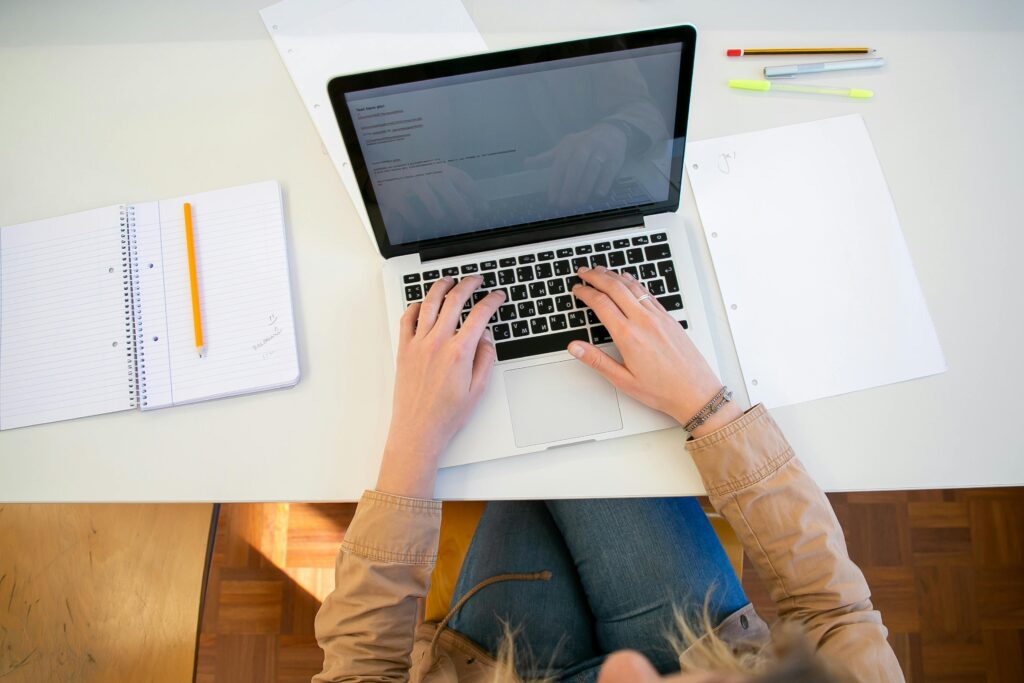
When it comes to typing, many learners face the same question: Should you focus on speed or accuracy first? While typing fast feels satisfying, true mastery comes from finding the perfect balance between quickness and precision. After all, what good is blazing speed if your work is full of errors?
Touch typing is about rhythm, consistency, and control. Just like in sports or music, your technique matters more than how fast you move. With patience and the right mindset, you can develop both accuracy and speed simultaneously—creating a foundation for lifelong digital fluency.
Why Accuracy Comes Before Speed

Accuracy is the bedrock of strong typing skills. Every typo slows you down because you need to pause, backspace, and correct. In contrast, precise typing trains your fingers to remember correct key positions automatically, reducing future mistakes.
For beginners, it’s best to start slow. Focus on hitting the right keys consistently, keeping your posture correct, and minimizing unnecessary hand movement. These habits create muscle memory—your brain’s way of building automatic responses. Over time, your fingers will naturally glide across the keyboard faster, without conscious effort.
Touch typing plays a crucial role here. When you type by feel rather than sight, your accuracy improves dramatically because your focus shifts from key locations to the text itself. You’re not just typing—you’re thinking ahead, processing ideas, and expressing them fluidly.
Another benefit of prioritizing accuracy is confidence. Typists who train carefully tend to make fewer errors under pressure, whether they’re writing essays, coding, or managing online communication. Once accuracy becomes second nature, speed naturally follows.
Master Typing & Digital Skills with Typesy!
Go beyond keyboarding—Typesy helps you boost digital literacy, productivity, and efficiency in today’s tech-driven world.
How to Train for Speed Without Losing Control

Once your accuracy reaches a stable level (around 90–95%), you can start safely increasing speed. The key is to challenge yourself gradually while keeping precision in check.
1. Use structured typing exercises.
Programs like Typesy are designed to help you measure both words per minute and error rates. These tools adapt to your skill level, offering real-time feedback that helps balance performance. Regular practice using guided lessons improves not only your typing rate but also your understanding of digital learning progress.
2. Focus on rhythm, not racing.
Speed comes from rhythm, not frantic key presses. Try setting a metronome pace or typing along with a steady beat. Smooth, even motion builds endurance and reduces finger fatigue.
3. Practice short, meaningful sessions.
Typing for long stretches without rest can lead to sloppy technique. Instead, type for 15–20 minutes at a time, maintaining focus and proper posture. Taking short breaks also supports healthy screen habits, which keep your eyes and wrists comfortable over time.
4. Track your progress.
Keep a journal or use digital tools to record your words per minute and accuracy scores weekly. Seeing measurable improvement keeps motivation high.
5. Challenge yourself with real-world tasks.
Once you’re comfortable, apply your typing skills in practical scenarios—writing essays, creating reports, or chatting online. These activities require both speed and thought, which reinforce long-term learning.
The Science of Speed and Accuracy
Interestingly, studies on skill acquisition show that accuracy and speed rely on two different types of memory. Accuracy comes from declarative memory—the conscious effort of recalling correct patterns. Speed, on the other hand, develops through procedural memory, where repeated practice turns actions into instinct.
That’s why consistent, deliberate practice is essential. Pushing speed before your brain builds accurate muscle memory can lead to lasting bad habits. On the other hand, once you’ve trained accuracy properly, speed becomes almost automatic.
Typing fast and error-free isn’t just about productivity—it’s about communication. When your fingers move fluidly, your thoughts can flow directly into words, helping you express ideas faster and more clearly.
In the long run, the best typists are not the fastest or the most precise—they’re the most balanced. They know when to slow down for accuracy and when to accelerate for efficiency.
So, take your time, practice mindfully, and remember: speed is a reflection of skill, not the goal itself.
Not on Typesy Yet? You're Missing Out!
Master typing, boost productivity, and enhance digital literacy with Typesy—the leading platform for adaptive and engaging typing education. Whether you're an individual learner, a homeschool educator, or managing a classroom, Typesy has the perfect solution for you!
Choose Your Ideal Experience:




